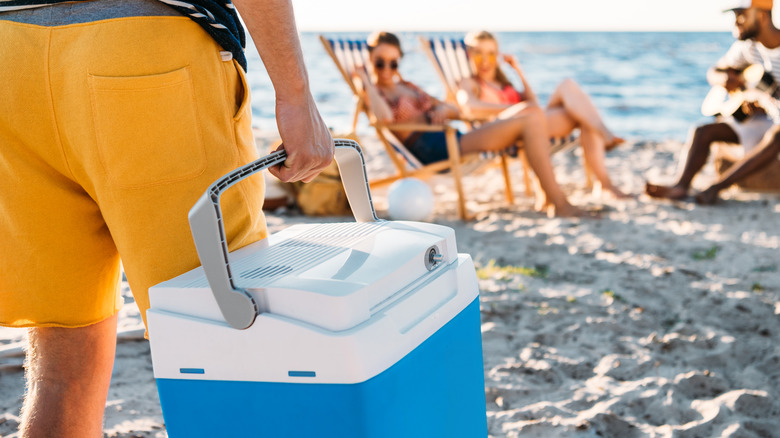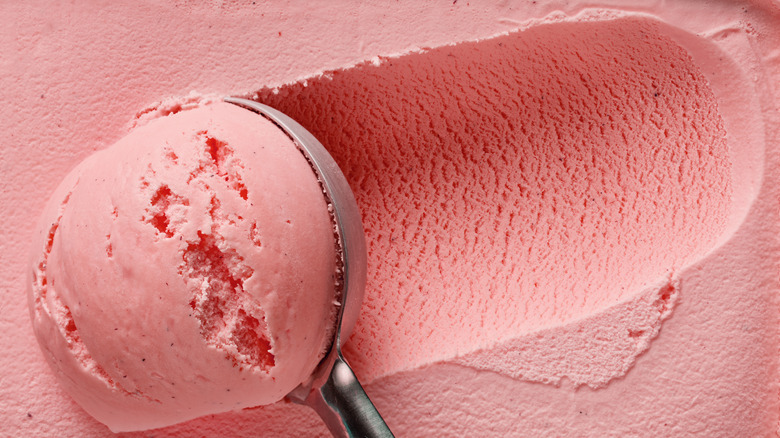The Trick To Keeping Ice Cream Frozen In Your Cooler This Summer
The perfect end to a summer day at the beach is, of course, a scoop or two of ice cream. According to the International Dairy Foods Association, ice cream producers see their busiest period between March and September, the months when their fans are most in need of something cold and sweet. But if there's not an ice cream stand where you're swimming, you're looking at a BYO-frozen-treat situation, whether you're toting store-bought or homemade ice cream in your trusty cooler. And if you're looking at a BYO-frozen-treat situation, that means you're facing a technical challenge: keeping the ice cream from melting before you've had a chance to dig in.
Unless you're prepared to drop some cash on one of those battery-powered coolers, you'll need the right strategy for doing that. Luckily, there's an array of options available to you. Here's the bottom line: Dry ice will help your ice cream stay frozen the longest. But if you don't have any on hand, we've got some easier tricks for you too. Here are a few of our best suggestions for keeping your ice cream portable and ready for snack time.
Your best bet: dry ice and a good cooler
When the professionals need to ship perishable foods, they turn to dry ice — carbon dioxide that has cooled until it has solidified. Carbon dioxide freezes at a temperature of about -109 degrees Fahrenheit, as opposed to 32 degrees for water, so dry ice is much, much colder than regular ice. You don't want to touch it with bare hands, but you may want to use it for keeping frozen foods from thawing. Dry ice is available for purchase at many grocers, as well as at retailers like Walmart.
Another thing you'll want is a quality cooler. Look for hard plastic rather than metal (which absorbs heat) or soft nylon (which tends to be thin and flimsy). Once you've chosen your vessel, pre-chill it by adding some regular ice, closing it, and letting it sit for a few hours. Then when you're ready to go, dump out the initial batch of ice and line the cooler with aluminum foil, which will prevent heat from escaping. A layer of styrofoam lining will also help keep the chill in.
The easy way to keep ice cream cool
Since it can be tricky, here are some tips on handling dry ice. But if you don't want to mess with all that, a few easy maneuvers will help keep your ice cream from becoming soup. First, if you're using regular ice, put it in sealable bags so it doesn't get water all over the place. Sprinkle in some rock salt (the stuff that people used to use to make ice cream). It lowers the freezing point of water; plain old table salt will also work here. When loading the cooler, add the ice cream first, as it'll stay colder on the bottom. Then place a layer of material on top of the ice cream to help further insulate it; Foam yoga mat material is a great choice here.
Air is your enemy, so pack the cooler as tightly as possible, using any other foods you're bringing along (or, really, anything that might just take up a little space) — kitchen towels or balled-up newspaper could also fill any gaps. This last tip might be obvious: Keep the cooler in a shady spot, like under a beach umbrella, rather than in sunlight. That might be where you want to end up, anyway, when you're eating it: As soon as you take this stuff out of the cooler and dish it out, you're in a race against time.


